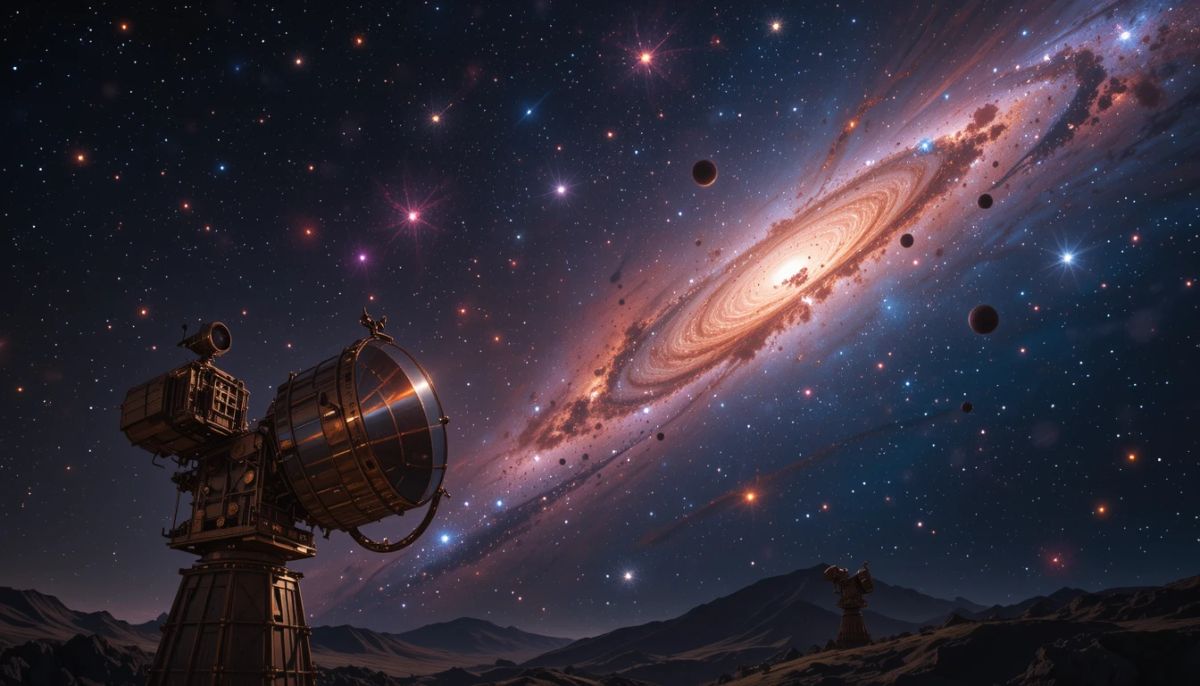The launch of the James Webb Space Telescope (JWST) has revolutionized our understanding of the early universe, offering unprecedented insights into the formation of the first galaxies just a few hundred million years after the Big Bang. Researchers leveraging JWST's capabilities are now painting a clearer picture of cosmic history, uncovering key information about the stars, structures, and evolution of these ancient celestial bodies.
A Look Back: Why the First Billion Years Matter
The universe's first billion years were a time of cosmic transformation, shifting from the "dark ages" — when no luminous objects existed — to a universe teeming with stars and galaxies. Understanding this period is crucial for tracing the origins of galactic evolution and star formation.
Before the arrival of JWST, scientists relied heavily on data from the Hubble Space Telescope and ground-based observatories. While these tools provided valuable insights, they fell short of capturing the faint, distant signals from galaxies formed shortly after the Big Bang.
Key Discoveries Made Possible by JWST
1. Pushing the Redshift Frontier
The redshift (z) of a galaxy indicates how far back in time we are observing it. Higher redshifts correspond to earlier points in cosmic history. JWST's Near Infrared Camera (NIRCam) has shattered previous records, detecting galaxies at redshifts of up to z ≈ 15, representing a universe only 300 million years old.
This discovery marks a dramatic leap forward, as prior to JWST, the highest confirmed redshift was around z ≈ 11.
2. Stellar Mass and Population Studies
Through spectral analysis, researchers have determined that many early galaxies already contained significant stellar masses — up to 10^9 solar masses. These galaxies often hosted young, metal-poor stellar populations, indicative of rapid star formation.
Interestingly, the presence of Balmer breaks in some spectra suggests that not all early galaxies were dominated by newly formed stars. Some exhibited signs of older stellar populations, pointing to bursty star formation histories.
3. Star Formation Rates and Galaxy Sizes
JWST data reveals that galaxies at z ≈ 7 vary greatly in size and star formation rates. Large galaxies at this redshift can produce stars at rates exceeding 100 solar masses per year, while smaller systems display much lower activity.
The newfound ability to measure these properties highlights JWST's role as a game-changer for understanding galactic evolution in the early universe.
The Role of Dust and Metallicity in Early Galaxies
One of the surprising revelations from JWST's observations is the abundance of dust and metals in some high-redshift galaxies. Despite their young age, these galaxies show signs of significant chemical enrichment, likely due to intense star formation and subsequent supernova explosions.
The detection of sub-solar carbon-to-oxygen (C/O) ratios further underscores the differences between early and modern galaxies, offering clues about the nature of star formation and nucleosynthesis during this epoch.
The Hunt for Ionizing Sources and AGNs
JWST's spectroscopic capabilities have enabled the detection of strong ionization lines, such as CIV and HeII, in many high-redshift galaxies. These features point to the presence of hard radiation fields, potentially generated by massive, young stars or active galactic nuclei (AGN).
The discovery of a population of red, broad-line AGNs at z > 6 suggests that supermassive black holes were already prevalent in the early universe. These black holes appear to have grown rapidly, challenging existing models of black hole formation and growth.
Galaxies and Reionization: A New Perspective
The reionization epoch marks the period when the universe transitioned from being mostly neutral to fully ionized. Understanding the contribution of galaxies to this process is a key scientific objective.
JWST has provided new constraints on the ionizing efficiency of galaxies at z ≈ 10, indicating that reionization may have started earlier than previously thought. The detection of Lyman-alpha (Lyα) emission lines in galaxies at z > 7 further supports this hypothesis, suggesting that large ionized bubbles were already forming in the intergalactic medium (IGM).
Future Prospects and Challenges
As JWST continues to collect data, researchers are optimistic about further breakthroughs, including:
- Mapping Large-Scale Structures: JWST's grism capabilities allow for three-dimensional mapping of dense galaxy regions, offering insights into cosmic web formation.
- Refining Reionization Models: Future studies will aim to measure the size and distribution of ionized bubbles during the reionization epoch.
- Characterizing Stellar Populations: High-resolution spectroscopy will provide direct measurements of stellar wind and photospheric features, revealing the detailed properties of early stars.
Despite its successes, JWST's mission faces challenges, including the need for more sophisticated models to interpret complex data and the limitations of current detection techniques for faint, distant galaxies.
Conclusion: A New Chapter in Cosmic Discovery
The observations made possible by JWST are reshaping our understanding of the universe's formative years. From pushing the redshift frontier to uncovering the secrets of early star formation, this telescope has opened a new window on the cosmos.
As we continue to explore these distant galaxies, one thing is clear: JWST's journey is just beginning, and its discoveries will fuel scientific advancements for decades to come.
